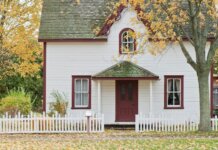First American‘s Potential Home Sales Model for July 2022 shows that potential existing-home sales decreased to a 5.45 million seasonally adjusted annualized rate (SAAR), a 0.2% month-over-month decrease.
This represents a 56.4% increase from the market potential low point reached in February 1993.
The market potential for existing-home sales decreased 14.4% compared with a year ago, a loss of 918,400 (SAAR) sales. Currently, potential existing-home sales is 1,336,000 (SAAR), or 19.7% below the pre-recession peak of market potential, which occurred in April 2006.
“It’s clear that the housing market has slowed from its pandemic-era frenzy, as buyers adjust to the new reality of higher mortgage rates,” says Mark Fleming, chief economist at First American. “Excluding the spring of 2020 when the housing market came to a brief halt, existing-home sales in June declined to their lowest level since February 2019.
“The decline is not a crash, but rather an adjustment to a not-so-new normal,” he adds. “Potential home buyers are facing greater economic uncertainty and mortgage rate volatility, but there remains a deep-seated desire for homeownership, especially among millennials.”
Compared to a year ago, median household income increased by approximately 4.7 percent. However, that increase was not sufficient to offset the affordability loss from rising interest rates. In turn, there was a 23 percent decline in house-buying power, Fleming notes.
“The annual decline in house-buying power reduced market potential by nearly 520,000 sales compared with a year ago. However, the month-over-month trend offered a bright spot as house-buying power edged higher by 1.7 percent in July, as rates dipped lower and household income continued to rise. A decrease, or even stabilization, in mortgage rates may encourage some potential buyers to come off the sidelines,” he says.














